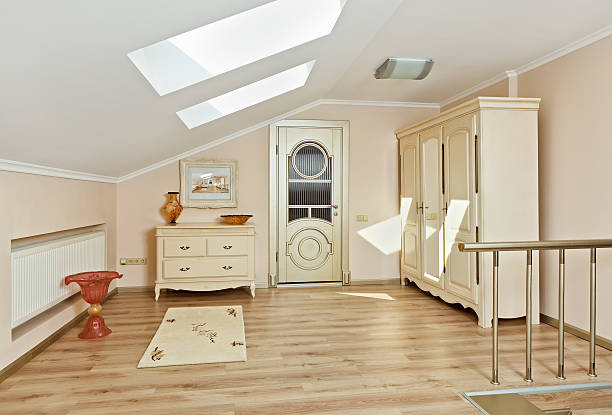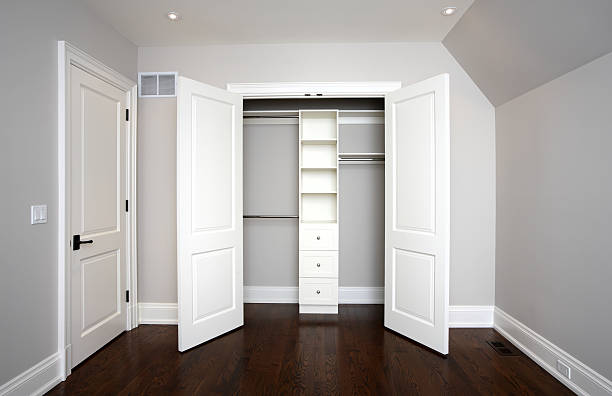Sustainability and environmental awareness, as we all know, are becoming more and more significant as a result of the threats posed by climate change. Therefore, it has become more important than ever to find ways to cut waste and lessen our ecological footprint. Our approach to furniture is one area of home decor where we can have a big influence. There are frequently opportunities to repurpose, reuse, or recycle old or unwanted pieces before simply throwing them away, giving them new life and lowering the demand for new furniture.
How, though? Do not be alarmed; we are here to help! As the saying goes, change is the only constant, and there are many ways to curate your most private spaces, according to Sajal Lamba, co-founder and director of Wriver. It can be a truly authentic way to share your story with people you invite into your home or place of business to “invent ways to express your lifestyle choices through your living space,” she continued.
The interior designer also added that how we decorate our homes reflects our deepest values and aspirations. According to her, curating living spaces based on size and traffic flow as well as more minute details like the shape, colours, and types of furniture you choose to bring together is the secret to achieving harmony between design and functionality.
Despite the abundance of professional advice available, Lamba highlighted a few crucial aspects of redesigning your interiors with accessible furniture.
Rearrange the furniture

Fill a room with accent pieces that, until now, were only enjoyed in the privacy of your bedroom or study room, rather than the multiple pieces you might typically choose. “Disassemble a sectional. A sectional doesn’t have to remain in a particular configuration just because it was bought to fit together in a particular way. The pieces can frequently be rearranged into a different layout that might fit a new space better, she said.
Combining several ideas to create a singular assertion

Think about arranging objects in a way that increases or expands space. “Create a cosy area by adding an ottoman to an existing sofa or lounge chair. Or simply change the upholstery on your sofa to a magnificent print instead of a striking colour.That kind of easy renovation can alter the atmosphere, appearance, and feel of a place. To create a corner where none previously existed and to increase the amount of usable seating, try incorporating a low or seat-height ottoman-coffee table, the expert advised.
Making audacious, mismatched decisions
Imagine you want to increase the seating in your living room or add a few end chairs to your dining table. Instead of purchasing matching furniture for what is already there, experiment with the sofas and chairs you currently own. Be daring and embrace some “mismatch,” as that undoubtedly tells a story that is particular to your personality! Almost anything can be used as a low table. Although many items can double as a small table or seat, designers frequently hail stool tables as multifunctional design superheroes.
Play with the functionality

You can experiment with furniture’s functionality when you need more workspace or when you simply want to make a statement. Consider using items like chests, chairs (especially sturdy indoor-outdoor seats), crates, and the like to act as a small table in the bathroom, at the foot of the bed, on the patio, and so forth. The results are frequently gorgeously unique, according to Lamba.
By adopting these techniques, we can enhance our living spaces while also promoting a more environmentally responsible and sustainable approach to home decor.
36 comments
Absolutely pent content, Really enjoyed looking through.
I truly appreciate this post. I¦ve been looking everywhere for this! Thank goodness I found it on Bing. You’ve made my day! Thx again
Sumatra Slim Belly Tonic primarily focuses on burning and eliminating belly fat.
I know this if off topic but I’m looking into starting my own weblog and was curious what all is needed to get setup? I’m assuming having a blog like yours would cost a pretty penny? I’m not very internet savvy so I’m not 100 certain. Any recommendations or advice would be greatly appreciated. Thanks
I have been absent for a while, but now I remember why I used to love this website. Thanks, I’ll try and check back more frequently. How frequently you update your web site?
Well I sincerely enjoyed studying it. This subject provided by you is very constructive for correct planning.
FitSpresso: What Is It? FitSpresso is a natural weight loss aid that targets the root cause of excess body fat.
What is ZenCortex? ZenCortex is a cutting-edge dietary supplement meticulously crafted to provide essential nutrients that support and enhance healthy hearing
I think you have observed some very interesting details, thankyou for the post.
Hello.This article was extremely interesting, particularly since I was browsing for thoughts on this topic last Saturday.
You have noted very interesting points! ps decent site. “Where can I find a man governed by reason instead of habits and urges” by Kahlil Gibran.
I’m typically to running a blog and i actually admire your content. The article has actually peaks my interest. I am going to bookmark your website and preserve checking for new information.
You have brought up a very good details, thankyou for the post.
What is Sugar Defender? Is it safe for blood sugar? The inventor of Sugar Defender, a natural supplement that supports glucose levels, is Tom Green.
Hey there, You’ve done a great job. I’ll definitely digg it and in my view recommend to my friends. I am confident they’ll be benefited from this website.
I really like your writing style, superb info, regards for putting up :D. “I will show you fear in a handful of dust.” by T. S. Eliot.
I got good info from your blog
Good blog! I truly love how it is easy on my eyes and the data are well written. I’m wondering how I could be notified whenever a new post has been made. I have subscribed to your feed which must do the trick! Have a nice day!
Some genuinely nice and utilitarian info on this website, besides I conceive the design holds wonderful features.
I appreciate, cause I found just what I was looking for. You’ve ended my four day long hunt! God Bless you man. Have a great day. Bye
What Is Exactly Emperor’s Vigor Tonic? Emperor’s Vigor Tonic is a clinically researched natural male health formula that contains a proprietary blend of carefully selected ingredients.
Thanx for the effort, keep up the good work Great work, I am going to start a small Blog Engine course work using your site I hope you enjoy blogging with the popular BlogEngine.net.Thethoughts you express are really awesome. Hope you will right some more posts.
What is Sugar Defender 24? Jeffrey Mitchell made the Sugar Defender 24. It is a product (Sugar Defender Diabetes) that helps your blood sugar health.
I like this site because so much useful stuff on here : D.
Great line up. We will be linking to this great article on our site. Keep up the good writing.
I just wanted to post a small comment to say thanks to you for all the unique guidelines you are showing here. My particularly long internet search has at the end of the day been recognized with good details to share with my close friends. I would claim that many of us visitors are definitely lucky to be in a superb community with many wonderful individuals with very beneficial hints. I feel somewhat grateful to have seen the site and look forward to tons of more thrilling times reading here. Thanks a lot again for all the details.
Good day! This is my first comment here so I just wanted to give a quick shout out and tell you I genuinely enjoy reading through your articles. Can you suggest any other blogs/websites/forums that cover the same topics? Thanks a lot!
Heya i’m for the first time here. I came across this board and I find It really useful & it helped me out much. I hope to give something back and help others like you helped me.
I just could not depart your site before suggesting that I actually enjoyed the standard information a person provide for your visitors? Is going to be back often in order to check up on new posts
At this time it looks like Drupal is the top blogging platform out there right now. (from what I’ve read) Is that what you’re using on your blog?
With havin so much written content do you ever run into any issues of plagorism or copyright infringement? My site has a lot of unique content I’ve either authored myself or outsourced but it appears a lot of it is popping it up all over the web without my agreement. Do you know any methods to help prevent content from being ripped off? I’d really appreciate it.
Have you ever thought about publishing an ebook or guest authoring on other websites? I have a blog based on the same subjects you discuss and would love to have you share some stories/information. I know my subscribers would value your work. If you are even remotely interested, feel free to send me an e-mail.
What Is Wealth Signal? the Wealth Signal isn’t just a financial tool; it’s a new way of thinking about and achieving wealth. Unlike traditional methods that focus on external strategies, Wealth Signal emphasizes changing your internal mindset.
FitSpresso: What Is It?FitSpresso is a natural weight loss aid designed for individuals dealing with stubborn weight gain. It is made using only science-backed natural ingredients.
I haven¦t checked in here for some time since I thought it was getting boring, but the last few posts are great quality so I guess I¦ll add you back to my everyday bloglist. You deserve it my friend 🙂
Hey There. I found your weblog using msn. That is a very smartly written article. I’ll be sure to bookmark it and come back to read more of your helpful info. Thanks for the post. I’ll definitely comeback.